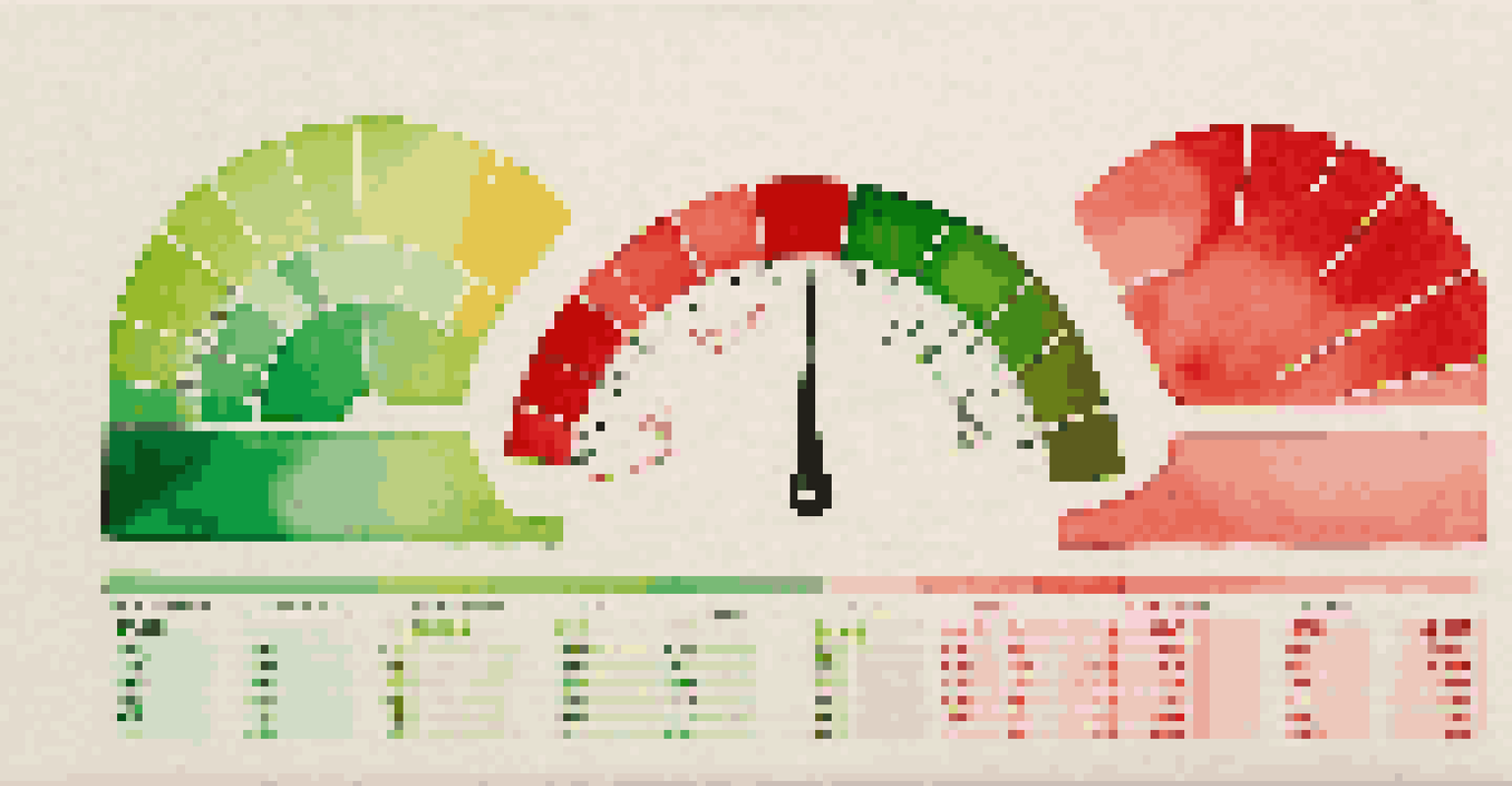The Role of Credit Risks in Real Estate Financing Decisions

What Are Credit Risks in Real Estate Financing?
Credit risk refers to the potential that a borrower may fail to meet their financial obligations. In real estate, this can create significant challenges, as lenders depend on borrowers to repay loans on time. Understanding credit risk is crucial for lenders when assessing the viability of financing a property.
Credit risk is the risk of default on a debt that may arise from a borrower failing to make required payments.
When a borrower defaults, it can lead to costly repercussions for lenders, including lost revenue and legal expenses. This risk assessment often involves analyzing a borrower's credit history, income, and financial stability. A deeper understanding of these factors helps lenders make informed decisions about financing.
For instance, a borrower with a strong credit history and a stable income may be viewed as a lower risk. Conversely, a borrower with a history of missed payments might be seen as a higher risk, leading to stricter lending conditions or even denial of financing.
How Credit Scores Influence Financing Decisions
Credit scores play a pivotal role in determining the terms of real estate financing. These scores, which range from 300 to 850, offer lenders a snapshot of a borrower's creditworthiness. A higher score typically translates to better loan terms, such as lower interest rates and larger loan amounts.

For example, a borrower with a credit score above 740 may qualify for a mortgage with favorable rates, while someone with a score below 620 could face higher rates or stricter eligibility requirements. This variance highlights the importance of maintaining a good credit score, especially for significant investments like real estate.
Understanding Credit Risks is Crucial
Credit risk assessment helps lenders gauge a borrower's ability to repay loans, impacting financing decisions.
Moreover, credit scores not only affect loan approval but can also influence the overall cost of borrowing. This means that understanding and improving one’s credit score can lead to substantial savings over the life of a loan.
Assessing Borrower Financial Stability
Beyond credit scores, lenders look at a borrower's overall financial stability when making financing decisions. This includes evaluating income, employment history, and existing debt levels. A comprehensive assessment ensures that lenders have a clear picture of the borrower's ability to repay the loan.
A good credit score can save you money on loans and credit cards, and it can help you qualify for the best interest rates.
For instance, a borrower with a steady job and low debt-to-income ratio is typically seen as a safer bet. In contrast, someone with inconsistent income or high debt may raise red flags, leading lenders to either deny the application or impose stricter conditions.
These financial assessments are crucial not only for the lender’s protection but also for the borrower. Understanding one's financial health can guide borrowers in making informed decisions about how much they can realistically afford to borrow.
The Impact of Economic Conditions on Credit Risks
Economic conditions significantly influence credit risks in real estate financing. Factors such as unemployment rates, inflation, and interest rates can all affect a borrower's ability to repay loans. During economic downturns, lenders often tighten their criteria, leading to increased scrutiny of potential borrowers.
For example, during a recession, many individuals may face job losses, which directly impacts their ability to meet mortgage payments. Lenders, aware of these risks, may raise interest rates or require larger down payments to mitigate potential losses.
Credit Scores Affect Loan Terms
Higher credit scores lead to better loan terms, emphasizing the importance of maintaining a strong credit history.
Thus, understanding the broader economic environment is key for both lenders and borrowers. It helps in anticipating challenges and adapting financing strategies accordingly.
Mitigating Credit Risks in Real Estate Financing
Lenders employ various strategies to mitigate credit risks associated with real estate financing. One common approach is requiring a larger down payment, which reduces the loan amount and the lender's exposure. By ensuring that borrowers have more skin in the game, lenders can better protect themselves against defaults.
Additionally, lenders might offer mortgage insurance, which provides a safety net in case of borrower default. This insurance can help cover losses and encourages lenders to approve loans that they might otherwise consider too risky.
Furthermore, creating a diverse loan portfolio can also help mitigate risks. By spreading investments across different types of properties and borrowers, lenders can reduce the potential impact of defaults in any single area.
The Role of Loan-to-Value Ratios
The loan-to-value (LTV) ratio is a crucial metric in assessing credit risks in real estate financing. This ratio compares the amount of the loan to the appraised value of the property. A lower LTV ratio indicates a smaller loan amount relative to the property's value, reducing the lender’s risk.
For example, an LTV of 80% means that the borrower is putting down 20% as a down payment. This lower risk can lead to better loan terms for the borrower, such as lower interest rates or reduced mortgage insurance requirements.
Economic Conditions Influence Risks
Economic factors like unemployment and inflation can significantly affect borrowers' repayment capabilities, prompting lenders to adjust their criteria.
Conversely, a higher LTV ratio might signal higher risk to lenders, potentially resulting in higher costs for the borrower. Understanding how LTV ratios work can help both parties navigate financing decisions more effectively.
The Future of Credit Risks in Real Estate Financing
As the real estate market evolves, so too does the landscape of credit risks in financing. Emerging technologies, like data analytics and artificial intelligence, are helping lenders assess credit risk more accurately and efficiently. These advancements can lead to quicker loan approvals and more tailored financing solutions.
However, economic uncertainties and changing regulations can also pose challenges. Lenders must stay informed about market trends and adapt their strategies to manage credit risk effectively. This ongoing evolution requires a proactive approach to remain competitive in the financing landscape.

Ultimately, understanding the changing role of credit risks can empower both lenders and borrowers. By staying informed, they can make smarter decisions that align with their financial goals and the realities of the market.